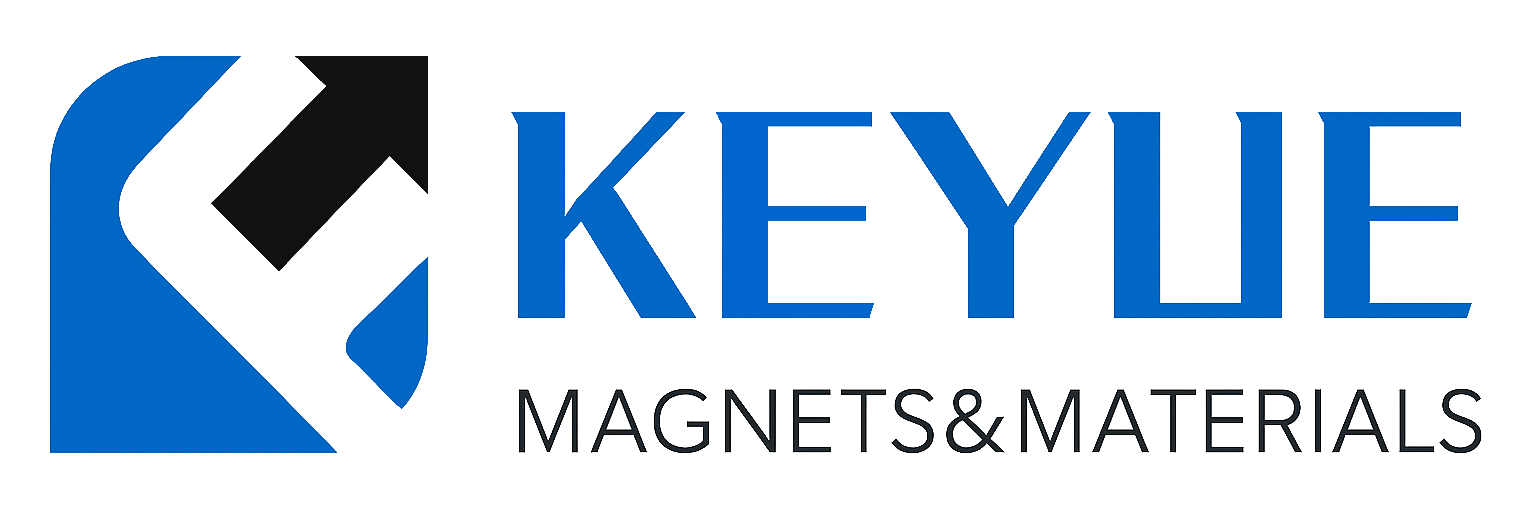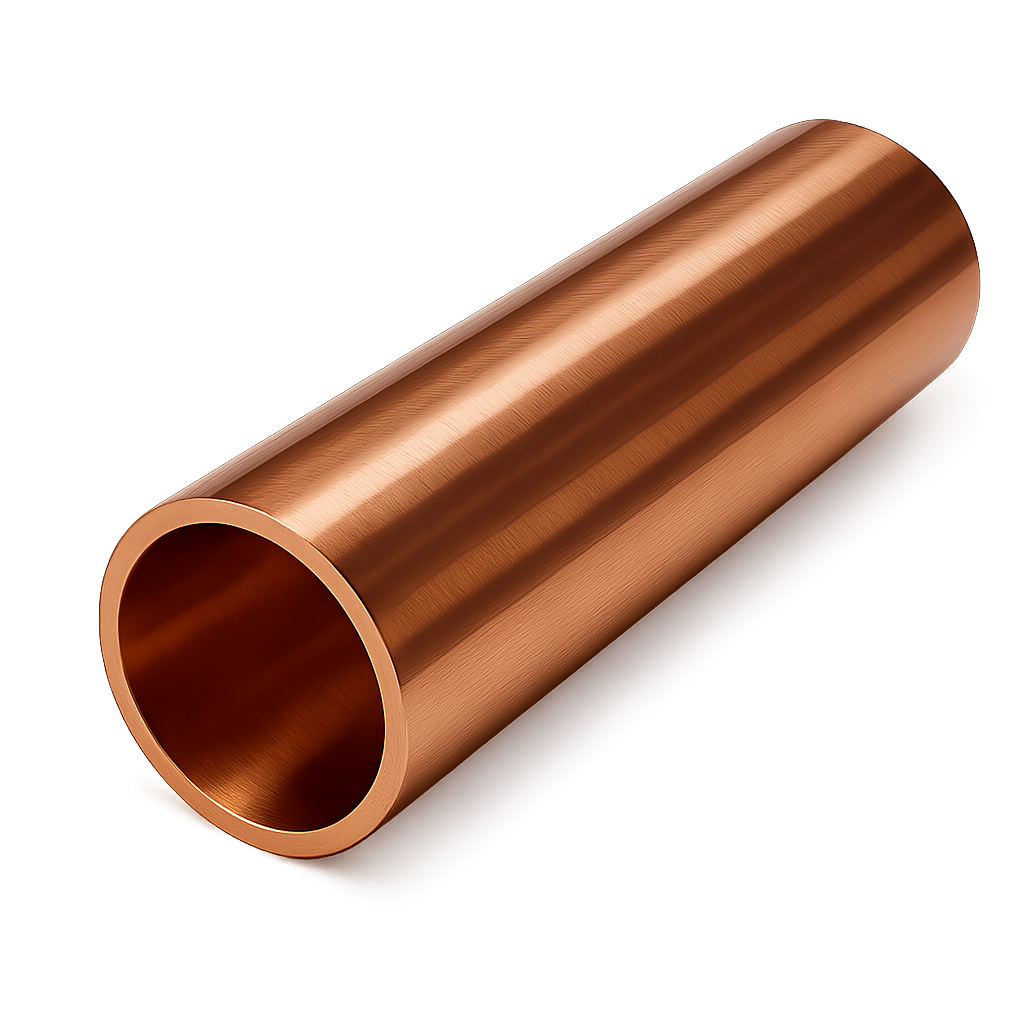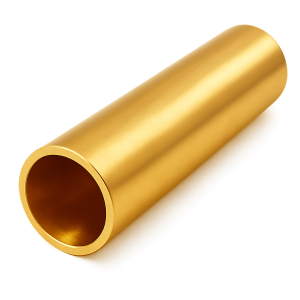描述
铜管(Cu Tube)
产品简介
铜管(Cu Tube)是一种由高纯铜(Purity ≥ 99.9%)制成的高导电、高导热金属管材。铜具有优异的延展性、耐腐蚀性和抗疲劳性能,是电气、热传导和真空系统中常用的基础金属之一。高纯铜管特别适合科研实验、高频设备、真空导流及电子结构件,能够在复杂环境中保持稳定性能与长久耐用性。
产品详情
苏州科跃材料科技有限公司提供的铜管采用高纯阴极铜经真空熔炼—挤压—冷拉—真空退火工艺制备,具有致密均匀的晶体结构与优异的表面光洁度。
典型规格如下:
-
纯度等级:99.9%、99.95%、99.99%(可选 OFHC 无氧铜)
-
外径范围:2 – 100 mm
-
壁厚范围:0.3 – 5 mm
-
长度:≤3000 mm(可定制)
-
制造工艺:真空熔炼 + 冷加工 + 退火 + 抛光
-
表面状态:亮光 / 亚光 / 抛光 / 去氧 / 无氧
高纯铜管可提供无氧铜(OFHC)或电子级铜(Cu-OF、Cu-OFHC、Cu-PHC),具有低气体释放率和高纯度特征,适用于真空与超高真空(UHV)系统。
应用领域
铜管广泛用于高端制造和科研实验中,包括:
-
电子与电气工业:用于导电管、屏蔽套、连接件与接地结构。
-
真空与冷却系统:作为气体或冷却液导管,耐高温、导热效率高。
-
科研与实验装置:高纯环境下的反应管、连接管或蒸发源套管。
-
热能设备与换热器:用于冷凝管、热交换管及传热系统。
-
航空航天与仪器制造:用于精密仪器内部导流与结构支撑。
技术参数
| 参数 | 典型值 / 范围 | 说明 |
|---|---|---|
| 纯度 | 99.9% – 99.99% | 纯度越高,导电与导热性能越好 |
| 密度 | 8.96 g/cm³ | 致密金属结构 |
| 熔点 | 1083 °C | 热稳定性强 |
| 导热率 | 398 W/m·K | 金属中导热率最高之一 |
| 电导率 | 58 × 10⁶ S/m | 高纯铜导电性能极优 |
| 抗拉强度 | 220 – 260 MPa(退火态) | 兼具强度与延展性 |
| 工艺 | 真空熔炼 + 精密加工 | 保证纯度与表面光洁度 |
常见问题(FAQ)
| 问题 | 答案 |
|---|---|
| 铜管是否具磁性? | 无磁性,适用于磁场敏感实验。 |
| 是否适合真空应用? | 是的,无氧铜管适用于真空及超高真空系统。 |
| 铜管会氧化吗? | 表面会自然形成氧化膜,可通过退火与防护层抛光处理。 |
| 可否用于导热系统? | 可以,铜具有极高导热率,是理想散热材料。 |
| 能否定制尺寸? | 支持内外径、壁厚及长度的定制生产。 |
| 是否可焊接? | 可进行TIG焊、钎焊或真空焊接。 |
| 表面是否可镀层? | 可进行镀镍、镀银或防指纹处理。 |
| 可否提供高纯无氧铜版本? | 可提供Cu-OF、Cu-OFHC等电子级材料。 |
| 是否提供检测报告? | 附带纯度分析与尺寸检测报告。 |
| 可否小批量供货? | 支持科研样品与批量订单。 |
包装与交付
每根铜管在出厂前均经尺寸检测与纯度分析。产品采用真空密封、防氧化薄膜与防震泡沫包装,外层防潮木箱封装。可提供RoHS、REACH、COC及材料检测报告。
结论
铜管(Cu Tube)以其卓越的导热性与导电性,在科研、电子、真空及冷却系统中发挥着关键作用。
如需了解更多技术参数或获取报价,请联系:sales@keyuematerials.com



-300x300.png)
-300x300.png)
评价
目前还没有评价